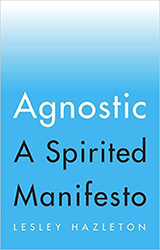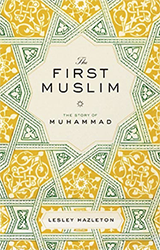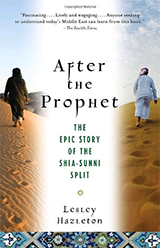I am distressed by this news report in today’s Detroit Free Press. The first four paragraphs:
A group of metro Detroiters visiting Saudi Arabia for the annual Muslim pilgrimage said they were attacked and threatened with death last week by a group of Sunni men from Australia because they are Shias, a minority sect within Islam.
One of the members of the group was strangled until his face turned blue and women in the group were threatened with rape, according to people who witnessed the attack last week. They allege that authorities in Saudi Arabia did not take their complaints seriously and deleted a video one of them had made of the incident.
A U.S. State Department official told the Free Press on Monday: “We are concerned by reports that a group of U.S. citizens was attacked … at a campsite for Hajj pilgrims located outside of Mecca. We take these reports seriously and are committed to the protection of U.S. citizens traveling and residing abroad.”
The Embassy of Saudi Arabia did not return a reporter’s calls or an e-mail seeking comment. The State Department official said the hajj and interior ministries in Saudi Arabia “have confirmed that they are investigating” the incident.
In this instance, my distress is more than a matter of principle. I have been a guest of Imam Qazwini and the Islamic Center of America (the largest mosque in North America), and admire their openness, their warmth, their calm devotion, and their civic involvement. I have made dear friends there, people with whom I can talk deeply across all so-called divides of religion/affiliation/belief.
And this distress is only further deepened by the language used in the Detroit Free Press article: the “say they were” in the headline, and the repeated use of the word “allege” in the body of the piece, as though there were some doubt on the veracity of Imam Qazwini and his group of pilgrims. Such language only adds insult to the injury of what actually happened.
In principle, the hajj is when all Muslims come together, when all distinctions of class, ethnicity, denomination, and even gender fall away. But the ultra-conservative and intellectually primitive Salafis — a movement very close to Saudi wahhabism — will have none of this. It’s their way or no way. Their Islam or no Islam. Like all fundamentalist extremists, of all faiths, they see open minds and open hearts as a threat. And respond with violence.
Expect a far more moderate response from the Islamic Center of North America than I am capable of. And expect nothing from the Saudi “investigation.” Year by year, as glitzy multi-million-dollar high-rises go up around the Kaaba itself, the Saudis bear ever greater resemblance to the seventh-century elite who profited from pilgrimage in the pre-Islamic years, charging exorbitant fees for everything from water to access to holy sites. In fact an essential part of Muhammad’s Quranic message protested exactly this.
But even that pre-Islamic elite insisted on preserving the pilgrimage as a time of absolute non-violence.
What, then, does the Saudi tolerance of Salafi intolerance make them?







In defense of the Detroit Free Press, they used the language they did to protect themselves from potential libel allegations. If they had serious doubts as to the veracity of the story, they most likely would not have run it at all.
There is no defense for the Saudi regime looking the other way, but this should hardly be surprising. While they might be a [political/strategic] ally, they remain an example of religious dogma and intolerance.
I share your skepticism regarding the potential fruits of a Saudi investigation, but they might make some token arrests as a gesture to U.S.-Saudi relations.
An ugly incident and totally un Islamic! Muslims (not Islam) are fallen today and a mere shadow of their former glory. The guy Saud (and so Saudi Arabia) patronized the so-called reformer Wahab and installed by the Brits & US (replacing the old Hashemites) and who to date remain their staunch alley and for this reason moderate Muslims dont like them. Mecca is central to Islam/Muslims as perhaps Jerusalem still is to Judeo-Christians. God will deal with them all.
I read the news report when you posted it on Facebook, and then I read the comments to your link. I was shocked to see that most people dismissed the report as some sort of conspiracy between the Shia pilgrims and the US Embassy to make Saudi Arabia look bad. Blame the victim before even taking another look! The details in the story look plausible to me, so even if there’re legal concerns when reporting, the leap to denial seemed impossible. But seeing not just one person deny that this story could happen, but many, made me realize – again – how intractable this conflict really is.
I’m reluctant from a position of lacking real knowledge of these affairs to spread misinformation, but I would say that the Syrian crisis has engendered low level conflicts within the Australian Muslim community which, on the whole, stay within that community.
There are a substantial number of Muslims of Lebanese and Syrian origin in Australia (few of Saudi origin) and some young men, particularly of Sunni faith, have been inflamed by the Syrian and other situations. The only real act beyond posturing that I am aware of, as an everyday Australian, is the call for boycotts of Shia run businesses.
That said, the following does not really surprise me:
http://www.5pillarz.com/2013/10/19/anti-shia-sectarianism-on-hajj-is-a-worrying-trend/
The ring-leader of the attackers has been identified by witnesses as a notorious thug from Australia who has previous. He has been arrested by the Australian authorities for physically attacking other Muslims (both Sunni and Shia) who refused to support the Syrian rebels in the past. Let us be under no illusion here, these takfeeri thugs disguised as hajjis were intent on murder, they were shouting this as they launched their 200-man strong attack.
I have just returned from Hajj and I hereby lodge my protest against the behaviour of the Saudi police and religious muttavas, who did NOT let us pray peacefully even in the courtyard of the Prophet’s mosque in Madinah nor in the roof top terrace at the Haram in Makkah. We had to hold our prayer meetings in a room of the hotel. It is disgraceful and a shame that we went all the way to the Holy cities and could not pray at the Mosques as we wanted. Why should the Salafi or Wahabi view be imposed on the rest of the Muslim world?
Reblogged this on Al-Must'arib (the vocational Mossarab) and commented:
Annd we seat and observe… yeah…. they r on their 15th century, as we were… and fighting religious wars as we did. Hmm…. history keeps rhyming.